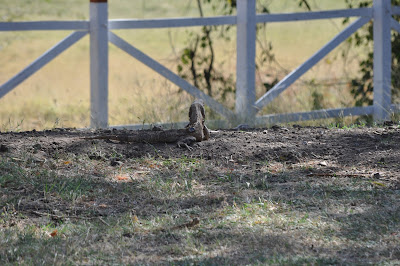 |
| Male C. similis wearing an Encounternet tag. |
It is almost time to return to Palo Verde, to warm weather and the dry tropics, to Ctenosaura similis research, and to all the joys and frustrations of field work.
 |
| GGG enjoying dappled sunlight. |
In the first few weeks, my task is to trap 25 animals and collect morphometric measurements to understand current body condition and overall health. Iguanas are favorably inclined to enter a humane trap for fruit, so this part is not too difficult.
Once measurements are taken, I'll make sure the animal is PIT tagged, take a small blood sample if needed, and attached a solar Encounternet tag.
I then will evaluate the lizard in a personality test for neophilia/neophobia. In an 3 sq. meter wood box outfitted with a plastic raptor reminiscent of natural predators, I'll let each iguana explore for 5 minutes, digitally recording their every move (or lack thereof!) for future analysis. Bolder animals should explore more of the box and be more willing to approach the plastic raptor compared to shy conspecifics.
In between trapping animals and behavioral testing, I'll be setting up base stations to collect data stored on the Encounternet tags and checking that everything works. Once all 25 lizards are trapped, tagged, and tested, the system can go live and eight weeks of data collection begins!
I feel fortunate to work at the OTS Palo Verde Research Station, in a country as beautiful as Costa Rica. Of course, research is always only possible with the help of so many others -- the School of Biological Sciences at the University of Northern Colorado, and the ever gracious and seriously invaluable staff at PV OTS. Here's to a great season of lizard social research!






















